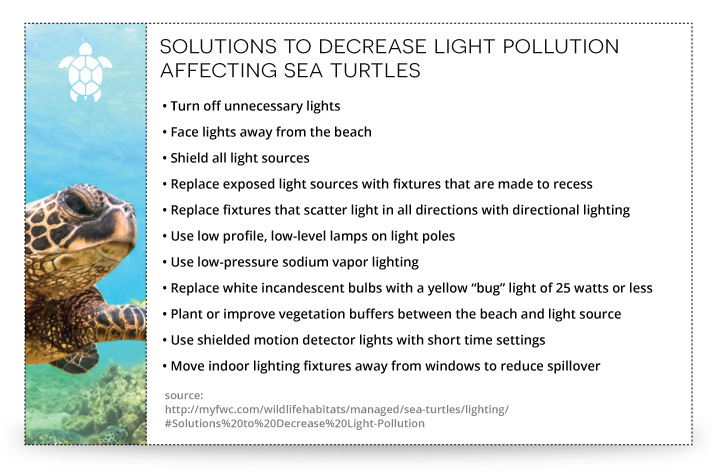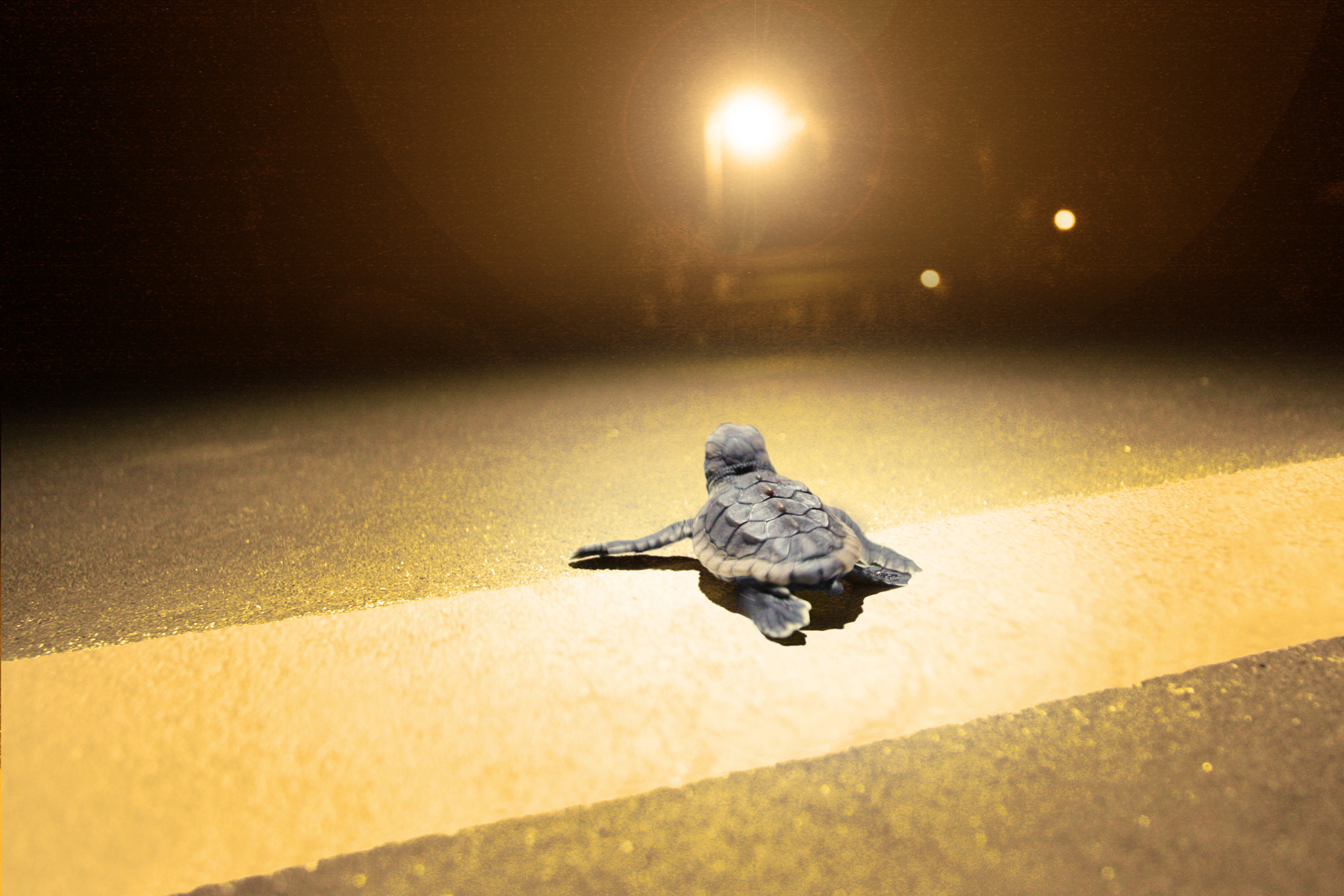Sea turtles are attracted to light sources, such as artificial lights on the shore and beachfront properties. Sea turtles are naturally drawn to light, whether it’s the glow of the moon or the reflection of stars on the water’s surface.
However, the increasing presence of artificial lights along coasts and beaches has a significant impact on these ancient creatures. Light pollution is a major threat to sea turtles, as it can disorient hatchlings and adult turtles, leading to harmful consequences.
We will delve into why sea turtles are attracted to light, the dangers they face from artificial lighting, and ways we can help protect these magnificent marine creatures. By understanding the issue at hand, we can take steps to mitigate the negative effects and ensure the survival of sea turtles for future generations.
Credit: www.cityoftybee.org
The Biology Of Sea Turtles
Sea turtles are magnificent creatures that inhabit the world’s oceans. There are seven species of sea turtles, each with its own unique characteristics and traits. These include the loggerhead, green, hawksbill, leatherback, flatback, olive ridley, and Kemp’s ridley turtles. They have been on this planet for millions of years and have successfully adapted to their marine environment.
The life cycle of sea turtles is fascinating. It begins when a female turtle comes ashore to lay her eggs in the sand. She carefully selects a nesting site and deposits a large number of eggs. These eggs then incubate for several weeks before the hatchlings emerge and make their way to the sea. The first few years of a turtle’s life are critical, with many challenges and predators to overcome.

Credit: conserveturtles.org
The Relationship Between Sea Turtles And Light
Many sea turtles rely on natural light cues for essential aspects of their life cycle. Hatchling turtles, for example, use light to orient themselves towards the ocean after emerging from their nests. Adult female sea turtles also use light to guide them back to the beach for nesting. These natural light cues are important for the survival of sea turtles and have been developed over millions of years.
However, the increasing presence of artificial light in coastal areas poses a threat to sea turtles. Artificial lighting can disorient both hatchlings and adult turtles, leading them away from the ocean and into danger. This occurs when artificial lights overpower the natural light cues that sea turtles rely on.
The negative effects of artificial light on sea turtles extend beyond disorientation. Artificial lighting can also disrupt the turtles’ natural behavior patterns, such as feeding and reproduction. Additionally, hatchlings that become disoriented and move inland are at a higher risk of dehydration, predation, and vehicle collisions.
To ensure the conservation of sea turtles, it is important to minimize artificial lighting near nesting beaches, implement guidelines for coastal lighting, and raise awareness about the impact of light pollution. By protecting sea turtles from the negative effects of artificial light, we can help safeguard their populations for future generations.
Conservation Efforts For Sea Turtles And Light Pollution
Sea turtles are sensitive to light and artificial lighting can have a negative impact on their behavior and survival. Conservation efforts for sea turtles often focus on addressing the issue of light pollution.
Protecting nesting sites is crucial in ensuring the survival of sea turtles. Many organizations and governments have implemented regulations to minimize the effects of artificial lighting on these sites. These regulations often include the use of turtle-friendly lighting fixtures that emit low levels of visible light, but still provide adequate illumination for human activities.
In addition to regulating lighting, educating the public about the importance of minimizing light pollution is also essential. Outreach programs and campaigns can help raise awareness and encourage individuals to adopt turtle-friendly lighting practices.
Overall, by implementing light regulations and promoting awareness, we can help protect sea turtles and their nesting sites from the negative impacts of artificial lighting.

Credit: www.voltlighting.com
Conclusion
To protect sea turtles and their fragile ecosystem, it is essential to minimize the impact of artificial light. This blog post has shed light on the negative effects of excessive lighting on sea turtles, especially during their nesting period. By raising awareness and adopting responsible practices, we can help mitigate the threats faced by these majestic creatures.
Let us remember that our actions today will shape the future of sea turtles and their habitats. Together, we can make a positive difference in preserving these beautiful marine species.





Leave a Reply